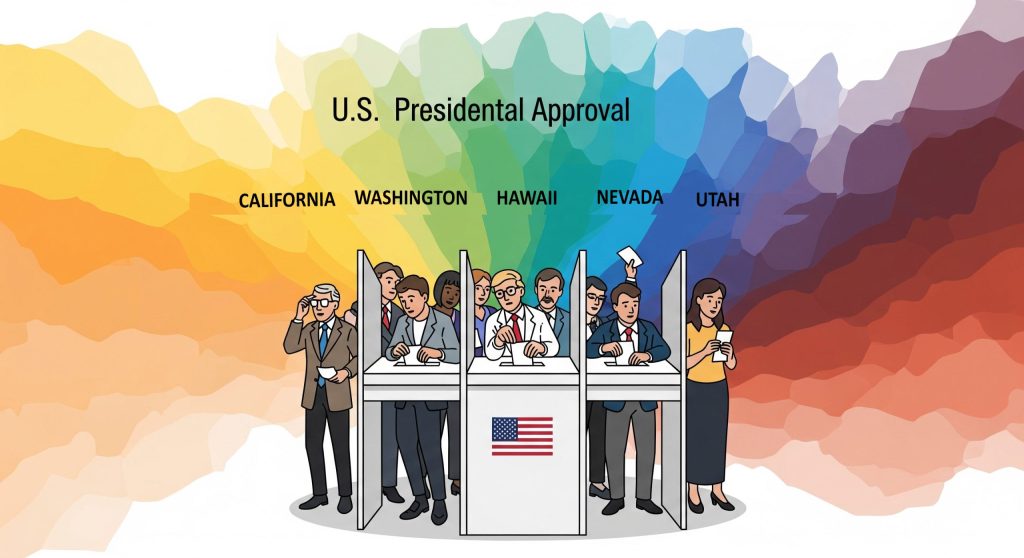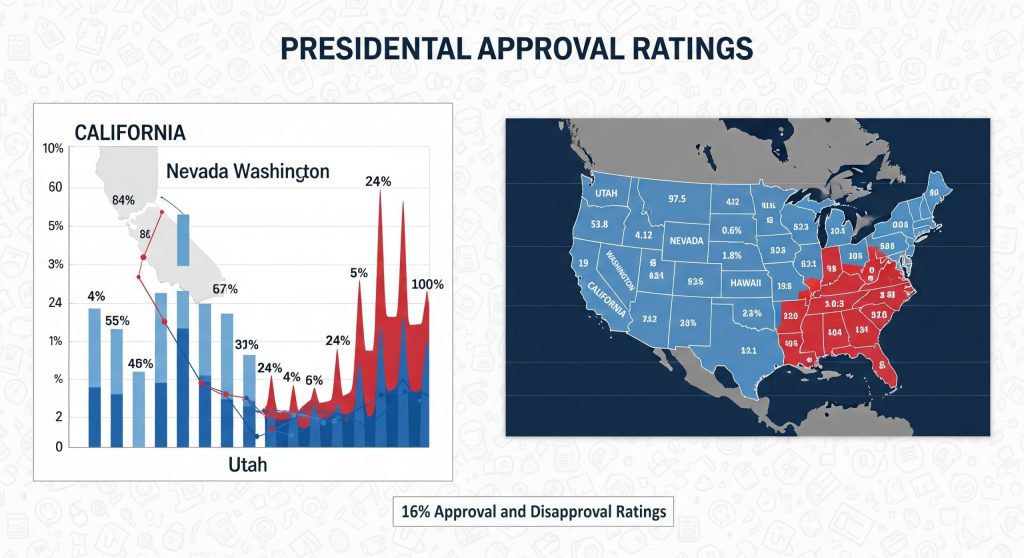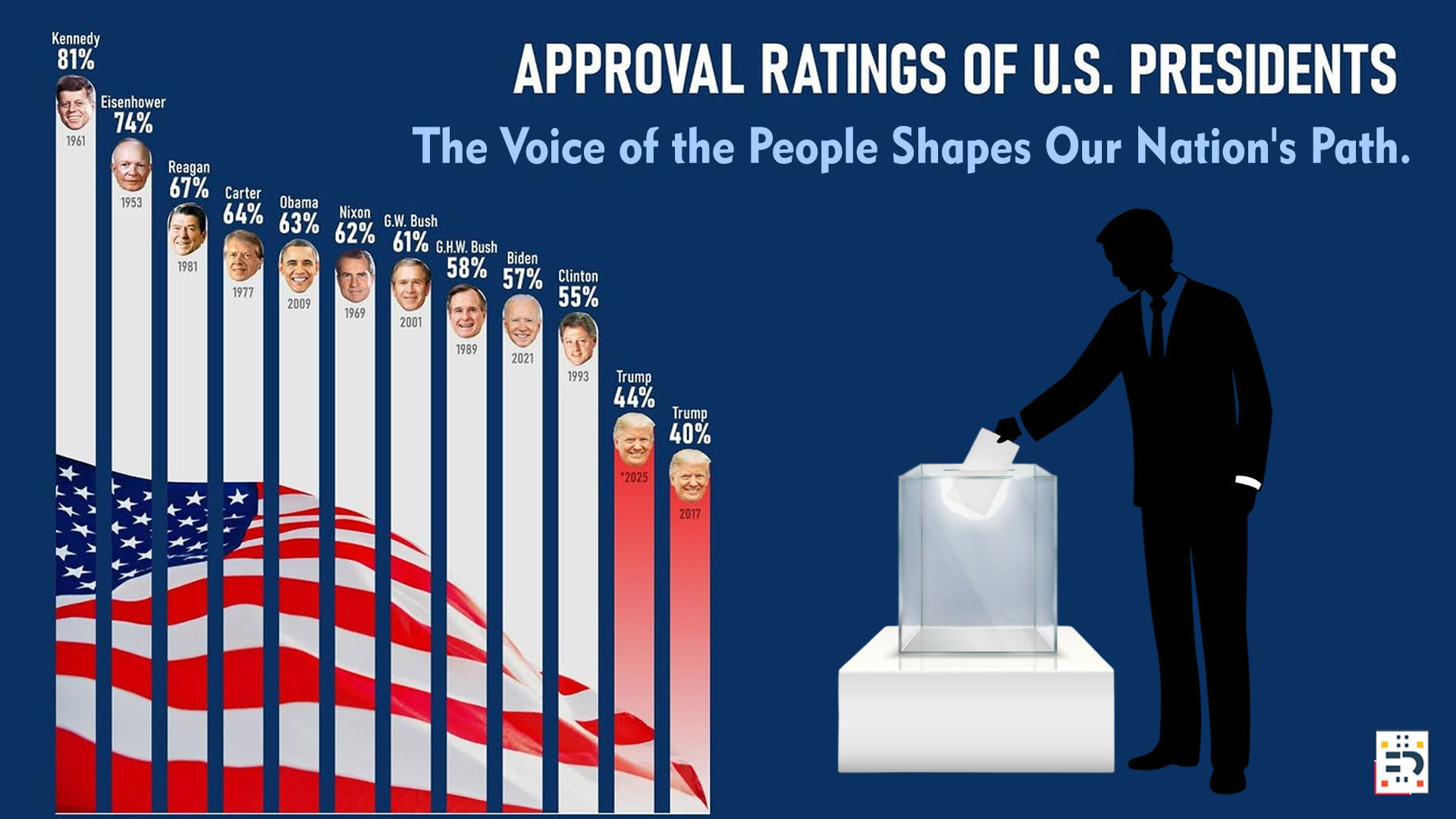United States presidential approval ratings serve as a consistent pulse on the nation’s sentiment towards its Commander-in-Chief. Far more than just popularity contests, these figures offer critical insights into the political climate, the effectiveness of a president’s agenda, and their potential influence on policy and elections. For anyone tracking US politics or American public opinion, understanding these metrics is essential.
What are Presidential Approval Ratings?
At their core, presidential approval ratings are a percentage derived from public opinion polls. They indicate the proportion of respondents who approve of the way the President is handling their job. Pioneered by George Gallup in the late 1930s, these polls typically ask a simple question: “Do you approve or disapprove of the way [President’s name] is handling his job as president?” You can find extensive historical data on presidential job approval at resources like the Gallup Poll or the Roper Center for Public Opinion Research.
How are They Measured?
Reputable polling organizations like Gallup, Pew Research Center, Associated Press-NORC (AP-NORC), and Quinnipiac University Poll conduct these surveys. The “gold standard” methodology often involves:
- Random Digit Dialing (RDD): This ensures that every adult in the U.S. population has an equal chance of being selected, including both landline and cell phone users, crucial for accurate national polling.
- Live Interviewers: While some polls are moving towards self-administered online surveys, many traditional polls still utilize trained live interviewers to minimize bias and ensure clarity.
- Representative Samples: Pollsters aim for large sample sizes (often over 1,000 respondents) and apply statistical weighting to ensure the demographic makeup of the sample (e.g., age, gender, race, education, region) accurately reflects the U.S. population. This is vital for reflecting the diverse American electorate, from populous states like California to more geographically distinct ones like Hawaii.
- Regularity: Polls are conducted with varying frequency, from weekly tracking averages to periodic multi-day surveys, allowing for the tracking of presidential approval trends over time.
While individual poll results can have a margin of error, the aggregate of various polls, often found on sites like PollingReport.com or through academic archives like The American Presidency Project, is generally accepted as a statistically valid indicator of shifts in public sentiment in the USA. These national figures, however, often mask significant regional variations, with distinct patterns emerging in states like Washington compared to Utah.

Historical Trends and Notable Moments
Presidential approval ratings are dynamic, influenced by a myriad of factors including:
- “Rally ‘Round the Flag” Effect: During times of national crisis or perceived external threats, approval ratings often see a significant, albeit sometimes temporary, surge as the public unites behind their leader. George W. Bush‘s 90% approval rating after the 9/11 attacks is a prime example of this phenomenon in US political history.
- Economic Performance: The state of the economy is a major driver of public sentiment. Periods of economic growth often correlate with higher approval, while downturns can lead to significant drops. These effects can be particularly pronounced in states with diverse economies, from the tech sector in Washington to tourism in Nevada.
- Major Policy Initiatives and Legislative Successes/Failures: Public reaction to key policies, such as healthcare reform, tax cuts, or foreign policy decisions like those impacting US foreign policy, directly impacts approval. How a policy is perceived can vary wildly, with reactions in a liberal state like California often differing significantly from a more conservative Utah.
- Scandals and Controversies: Negative events, whether personal or political, can rapidly erode public trust and approval. The impeachment process or major White House scandals often have a noticeable effect.
- Partisan Polarization: In increasingly polarized political environments, a president’s approval rating often reflects deep partisan divides, with strong support from their own party and low approval from the opposition. This is a key aspect of contemporary American political polling, leading to states like California and Hawaii consistently showing lower Republican presidential approval, while states such as Utah may reflect more nuanced or even divergent trends depending on specific issues.
Historically, presidents like John F. Kennedy and Dwight D. Eisenhower enjoyed high average approval ratings throughout their tenures. Conversely, presidents like Harry S. Truman and Richard Nixon experienced significant lows, with Truman hitting a remarkable 22% and Nixon a 23% approval at their lowest points. Recent presidents, including Donald Trump approval rating and Joe Biden approval rating, have seen their approval ratings fluctuate, often within a narrower band compared to some historical figures, reflecting the current era of intense partisan alignment across states like Nevada and Washington.
Impact on Presidential Power and Governance
Presidential approval ratings are more than just numbers; they directly influence a president’s ability to govern:
- Legislative Agenda: High approval ratings can provide a president with significant political capital, making it easier to push through their legislative agenda in Congress. A president with strong public backing is often seen as having a mandate.
- Negotiating Power: A popular president holds more sway in negotiations with US lawmakers, both within their own party and across the aisle.
- Public Persuasion: High approval can amplify a president’s voice and make the public more receptive to their appeals and policy initiatives. This is critical for public policy debates.
- Electoral Prospects: While not the sole determinant, approval ratings are a strong indicator of a president’s re-election chances and the electoral prospects of their party in upcoming election cycles, including the 2026 midterm elections and the 2028 presidential race. Low approval can signal voter dissatisfaction and pose a significant hurdle for incumbents or their party. The regional breakdown of approval ratings, particularly in swing states like Nevada, can be a bellwether for national electoral shifts.
- “Lame Duck” Status: As a president’s approval declines, particularly in their second term, they can face a “lame duck” period where their influence wanes, making it harder to achieve policy goals.

The Nuances of Interpretation
It’s crucial to interpret approval ratings with an understanding of their limitations:
- Snapshots in Time: Each poll is a snapshot of opinion at a specific moment and can change rapidly in response to events.
- Subjectivity: Approval ratings are based on individual opinions, which are influenced by a complex interplay of personal experiences, media bias, and ideological biases. These factors can lead to distinct patterns of approval, for instance, between urban centers in California and more rural communities in Utah.
- External Factors: Events beyond a president’s control, such as natural disasters or global crises, can significantly impact ratings.
- Not a Measure of Policy Success: An approval rating reflects public sentiment towards a president’s performance, but it doesn’t necessarily quantify the long-term success or failure of their policies. This distinction is important when analyzing government performance vs. public perception, even for policies that might disproportionately affect states like Hawaii (e.g., climate change policies) or Washington (e.g., trade agreements).
In conclusion, U.S. presidential approval ratings remain a crucial indicator in American politics. They provide a continuous assessment of public confidence in the nation’s leader, shaping the narrative, influencing political power, and offering a compelling lens through which to understand the complex interplay between public opinion and governance in the United States. Staying informed on current presidential approval polls, and recognizing their variations across states from California to Utah, is key for understanding the dynamic landscape of American democracy.


